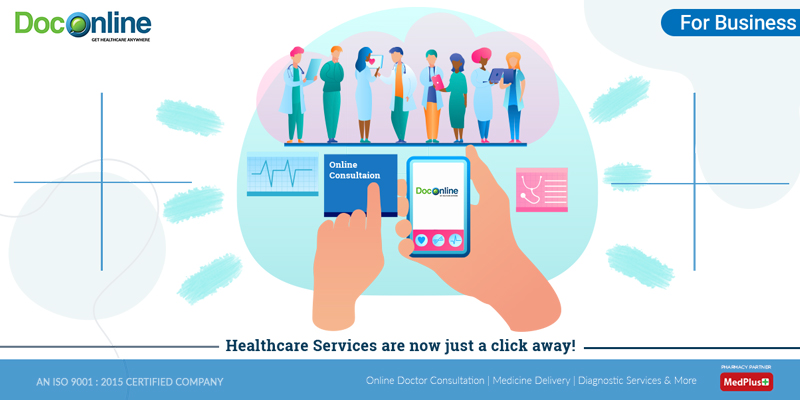Subscription Based Healthcare: Changing the Method We Consider Health
Subscription Based Healthcare: Changing the Method We Consider Health
Blog Article
Understanding the Cost-Effectiveness of Subscription-Based Health Care Models
As the medical care landscape advances, subscription-based models arise as an engaging choice, promising to redefine how individuals manage clinical expenditures. Reviewing these versions' cost-effectiveness demands a nuanced contrast with typical insurance policy, taking into consideration both economic ramifications and individual fulfillment.
Introduction of Subscription-Based Designs
Subscription-based health care models, sometimes referred to as straight key care or concierge medicine, are significantly obtaining focus as a possible solution to ineffectiveness within typical health care systems. These designs run on the concept of offering patients direct accessibility to medical care providers via a annual or month-to-month charge, bypassing the requirement for standard insurance policy systems. This plan aims to improve patient-provider interactions by reducing administrative burdens, which frequently hinder customized and prompt treatment.
At the core of subscription-based versions is the focus on a much more customized client experience. Patients gain from enhanced access to their doctors, usually including next-day or same-day visits, expanded consultation times, and direct interaction channels such as phone or video clip phone calls. This version promotes an aggressive technique to healthcare, where companies and clients can collaboratively concentrate on preventative care and persistent condition monitoring.

Cost Contrast With Typical Insurance Coverage

One of the primary monetary advantages of subscription models is transparency in expenses. On the other hand, conventional insurance policy may be much more beneficial for individuals requiring specialized treatment or costly therapies not covered under a membership design, as they profit from the broader insurance coverage network and cost-sharing mechanisms.
Nevertheless, cost-effectiveness is context-dependent. While registration designs may use financial savings for those largely needing health care, individuals with chronic conditions or specialized healthcare demands may discover typical insurance policy more detailed. Reviewing details health care demands and potential use is vital in determining the most cost-efficient choice for individuals.
Influence On Person Satisfaction
Person complete satisfaction within subscription-based medical care versions commonly shows a substantial improvement over standard insurance coverage systems. This enhancement is mainly associated to the individualized care and access these versions use. Individuals often report higher complete satisfaction due to reduced delay times and the convenience of organizing consultations. Unlike standard systems, where clients might experience hold-ups in receiving care, subscription-based versions make certain more straight and timely interactions with doctor.
Additionally, the transparency in prices linked with subscription-based health care reduces the usual irritations connected to unexpected costs and complicated billing procedures seen in conventional insurance policy (subscription based healthcare). Individuals appreciate recognizing the exact economic commitment upfront, bring about boosted trust and self-confidence in their healthcare monitoring
Additionally, the focus on preventive treatment and wellness in membership models adds to improved health and wellness end results, even more boosting client contentment. By concentrating on recurring health maintenance instead than episodic care, people experience a more continuous and holistic health care trip.
Additionally, the improved provider-patient partnership fostered in these designs, identified by more time spent per person and customized interest, plays a crucial role in raising person satisfaction levels, as individuals really feel truly cared for and understood.
Supplier Viewpoints and Experiences
From the supplier's point of view, subscription-based medical care models offer a transformative method to providing medical services. These designs highlight a preventative and aggressive medical care approach, permitting providers to focus on comprehensive client care without the constraints of conventional fee-for-service arrangements (subscription based healthcare). This shift in focus often results in improved person end results and raised copyright contentment, as medical care specialists can designate more time and resources click here to read to patient involvement and individualized treatment plans
Moreover, subscription versions assist in predictable revenue streams, which boost economic stability for doctor. This predictability enables enhanced resource preparation and allowance, adding to a more reliable health care delivery system. Carriers can spend in staff modern technology, facilities, and training enhancements, therefore improving the quality of treatment offered.
Nevertheless, the transition to subscription-based designs is not without challenges. Suppliers should adjust to new functional structures, which can include substantial changes in payment practices and individual management systems. Furthermore, there is an integral need for Learn More Here durable information management to track individual outcomes and guarantee top quality care. In spite of these difficulties, many companies locate that the benefits of enhanced individual communication and streamlined operations exceed the first challenges, making subscription-based designs an appealing alternative.
Future Leads and Challenges

A primary challenge is governing conformity, as membership models have to abide by developing healthcare plans and insurance coverage demands. This necessitates continual adaptation and development to make certain placement with legal standards. Furthermore, integrating these versions into existing healthcare frameworks can be complicated, requiring considerable investments in modern technology and training.
There is likewise the possible danger of creating injustices in healthcare gain access to, as subscription versions find here might prefer those who can manage them, leaving vulnerable populaces underserved. Resolving this requires thoughtful factor to consider of rates strategies and aid mechanisms to make sure inclusivity.
Conclusion
Subscription-based medical care models provide a viable option to typical insurance coverage by supplying financial predictability and transparency, specifically benefiting individuals with persistent problems or frequent health care demands. The cost-effectiveness of these models rests upon specific healthcare usage patterns and scenarios. While they might enhance individual satisfaction and improve budgeting, obstacles continue to be in addressing specialized care requirements. Future factors to consider consist of balancing extensive protection with cost and incorporating these versions within the broader healthcare system for ideal results.
Subscription-based medical care designs, often referred to as straight main care or concierge medicine, are increasingly gaining attention as a possible remedy to inadequacies within typical medical care systems. Unlike standard systems, where individuals may experience delays in receiving treatment, subscription-based designs guarantee more direct and prompt interactions with healthcare carriers.
These versions highlight a positive and preventative healthcare approach, permitting suppliers to focus on comprehensive person treatment without the constraints of typical fee-for-service plans. As these models proceed to get traction, they offer the prospective to transform patient accessibility to care, enhance service distribution, and enhance health care spending.Subscription-based health care models offer a practical alternative to typical insurance coverage by offering economic predictability and transparency, especially profiting people with chronic conditions or frequent health care requirements.
Report this page